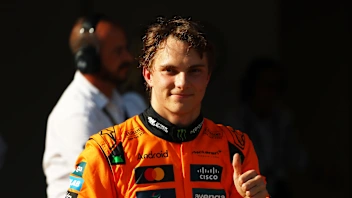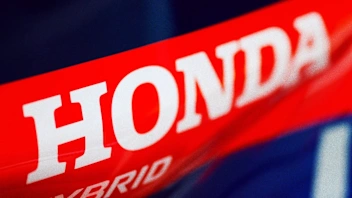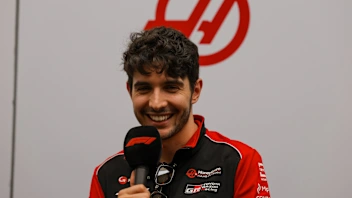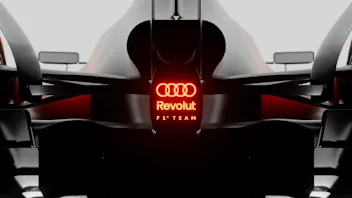Williams have become the latest team to release images of their 2014 car, the Mercedes-powered FW36.
Clearly visible in the rendered images, which the team posted on their official Twitter feed, is a distinctive drooped nose - a feature that many of the 2014 cars are expected to sport because of changes to the technical regulations that demand lower noses.
Also noticeable on the car, which has been presented in Williams' 'heritage blue' livery that will be used in testing, are a fin on the engine cover and a rear wing monkey seat which is situated behind the central exhaust outlet.
But what the images don’t show is just how much is going on under the bodywork of Williams' 2014 machine.
"There's a lot more technology on the cars this year," said Williams chief technical officer Pat Symonds. "We've had turbo-charged engines in F1 before; what's different this time is that it is much more than just an engine change, it is a completely different system. We've gone from a slightly hybridised normally-aspirated engine to a fully-integrated hybrid power unit with novel technology at its heart."
"Overall the cars will need more cooling this year," he added. "The demands on water and oil cooling may be slightly diminished, but the ERS system is significantly more powerful and hence needs more cooling. We also have to cool the charge air from the turbocharger compressor which requires a substantial intercooler."
Williams confirmed that the FW36's new eight-speed gearbox - the first the team have built in their history - ran on the dyno for the first time at the beginning of November, before running with the full power unit several weeks later.
"We finished the gearbox relatively early," said Symonds. "It's completed a lot of running on the test rig and at Mercedes HPP (High Performance Powertrains) in Brixworth, but you can't take reliability for granted. It's a completely new 'box and it has to cope with a lot more torque than was the case with the (2013) V8."
The FW36 passed all of its crash tests prior to Christmas, but ensuring the car meets the new minimum weight was more difficult, according to Symonds.
"The build of the new car has gone remarkably smoothly," he explained, "but it's been a challenge to get the car down to the weight limit. It's been achievable, but it hasn't been easy because the new power unit is heavier than the outgoing V8."
Williams revealed that they finalised their launch-specification aerodynamic package in the first week of December, with an upgrade package for Melbourne's season-opener signed off in early January.
"F1 is still going to be an aerodynamic formula in 2014," said Symonds. "There are some significant changes: the nose is lower than last year and the front wing is narrower, which means the end plates are now more shrouded by the front tyre. The rear wing isn't as deep as last year and the beam wing below it is no longer permitted, and we've also lost the ability to use the exhaust to enhance aero performance."
However, despite the changes, Symonds is confident the team will be “closer to the front aerodynamically than we were last year”.
Valtteri Bottas will give the new car its maiden run when it officially breaks cover at next week’s first pre-season test in Jerez. The Grove-based team’s new recruit, Felipe Massa, will take over driving duties for the final two days of the Spanish session, which runs from January 28-31.
Next Up
Related Articles
 Piastri reveals lessons that will ‘only make me stronger’
Piastri reveals lessons that will ‘only make me stronger’ Honda reveal details around power unit launch
Honda reveal details around power unit launch Getting to know the real Esteban Ocon
Getting to know the real Esteban Ocon ExclusiveHow Norris made his school teachers ‘enormously proud’
ExclusiveHow Norris made his school teachers ‘enormously proud’ An exclusive look into Pierre Gasly's off-track life
An exclusive look into Pierre Gasly's off-track life Audi announce team name and global launch date for 2026 challenger
Audi announce team name and global launch date for 2026 challenger